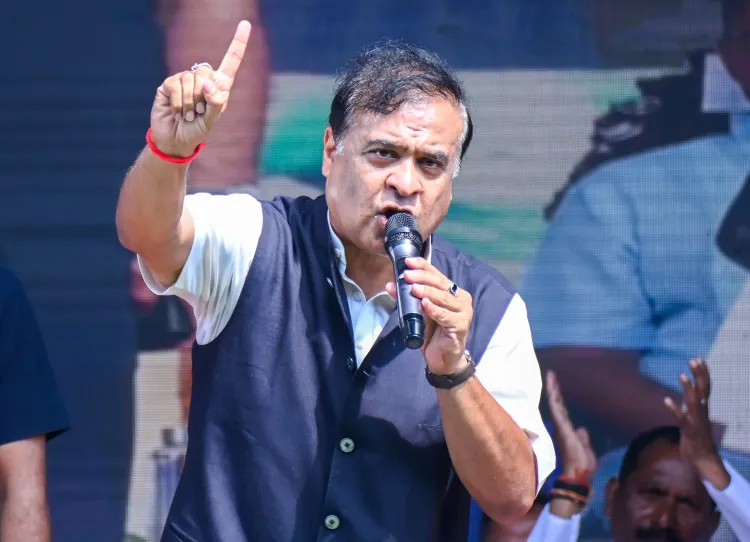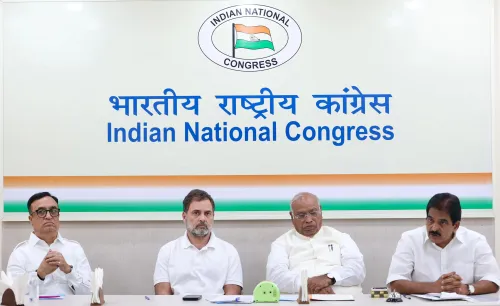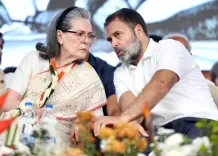Is the Miya Community Set to Become Assam’s Largest?

Synopsis
Key Takeaways
- Projected 38% population share of Miya Muslims in the upcoming Census.
- Government prioritizes the interests of indigenous populations.
- Eviction drives continue against illegal encroachments.
- Concerns raised about demographic shifts affecting cultural fabric.
- Proposed new laws to ensure demographic balance.
Guwahati, Oct 10 (NationPress) Assam's Chief Minister Himanta Biswa Sarma announced on Friday that the Miya Muslim community is anticipated to become the largest demographic group in the state, with their population share potentially reaching close to 38 percent in the upcoming Census.
While speaking to the media, Sarma stated, “Once the Census is conducted and the results are released, it will become evident that the population of the Miya community has surged to around 38 percent. If any statistical institution forecasts this, it will clearly show that they are on track to become the largest community in Assam — and that is a fact.”
The Chief Minister reaffirmed that safeguarding the interests of the state’s indigenous population continues to be his administration’s primary focus.
“The safety of Assam’s indigenous individuals will only be guaranteed if the Miya Muslims are subjected to scrutiny,” Sarma emphasized, noting that his government is contemplating the introduction of a new law in the Legislative Assembly to maintain the demographic and cultural equilibrium of the state.
In reference to ongoing eviction campaigns targeting encroached government and forest lands, Sarma remarked, “Eviction notices have been dispatched in Goalpara and Behali. We will not cease any operations. The initiative against unlawful encroachments will persist.”
Sarma’s statements have ignited significant political backlash, with opposition parties accusing him of trying to divide communities in advance of the upcoming elections.
Nevertheless, Sarma stood by his comments, asserting that he was bringing attention to a long-standing issue regarding unregulated demographic changes in the state.
This is not the first occasion Sarma has voiced concerns regarding demographic alterations. In numerous previous comments, he has suggested that uncontrolled population growth among certain groups could disrupt Assam’s social and cultural makeup.
The state government has also initiated population control measures and land reforms aimed at defending the rights of what it refers to as “indigenous Assamese people.”
The term “Miya” is locally used to describe Bengali-origin Muslims in Assam, many of whom inhabit the riverine (char) areas. Demographic issues surrounding this community have remained a politically charged and divisive subject in the state for decades.








